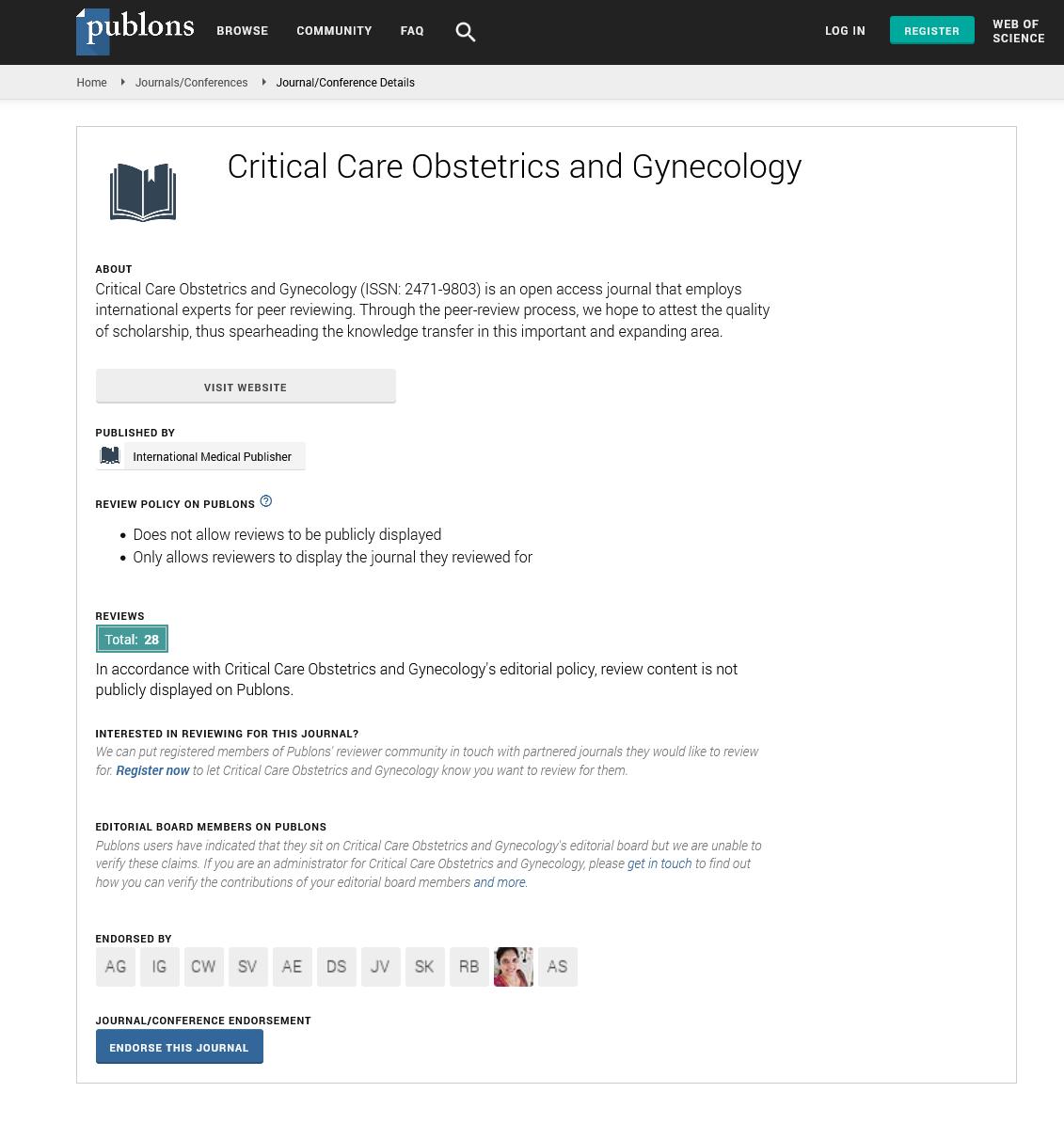Abstract
Obstetric critical care: Performance of the Obstetric Early Warning Score in critically ill patients
Every day, around 80 women die from preventable causes associated to pregnancy and childbirth around the world. Based on the identification of specified aberrant values in vital signs or laboratory markers, obstetric early warning scores have been proposed as a potential tool to reduce maternal morbidity and mortality by generating a prompt and effective medical response. Several early warning ratings for obstetrical patients have been created, although the vast majority are based on clinical consensus rather than statistical assessments of clinical outcome markers (ie, maternal deaths). The first statistically verified early warning scoring system for pregnant women was published in 201 by the Intensive Care National Audit and Research Center Case Mix Program. The goal of this study was to see how well the Intensive Care National Audit and Research Center Obstetric Early Warning Score predicted death among pregnant women who needed to be admitted to the intensive care unit. Pregnant women admitted to a tertiary referral center's intensive care unit with direct and indirect obstetric-related disorders from anuary 2006 to December 2011 in Colombia, a poor country, were included in this retrospective cohort study.
Author(s):
Tim David
Abstract | PDF
Share this

Google scholar citation report
Citations : 148
Critical Care Obstetrics and Gynecology received 148 citations as per google scholar report
Critical Care Obstetrics and Gynecology peer review process verified at publons
Abstracted/Indexed in
- Google Scholar
- China National Knowledge Infrastructure (CNKI)
- WorldCat
- Publons
- Geneva Foundation for Medical Education and Research
- Secret Search Engine Labs
Open Access Journals
- Aquaculture & Veterinary Science
- Chemistry & Chemical Sciences
- Clinical Sciences
- Engineering
- General Science
- Genetics & Molecular Biology
- Health Care & Nursing
- Immunology & Microbiology
- Materials Science
- Mathematics & Physics
- Medical Sciences
- Neurology & Psychiatry
- Oncology & Cancer Science
- Pharmaceutical Sciences


